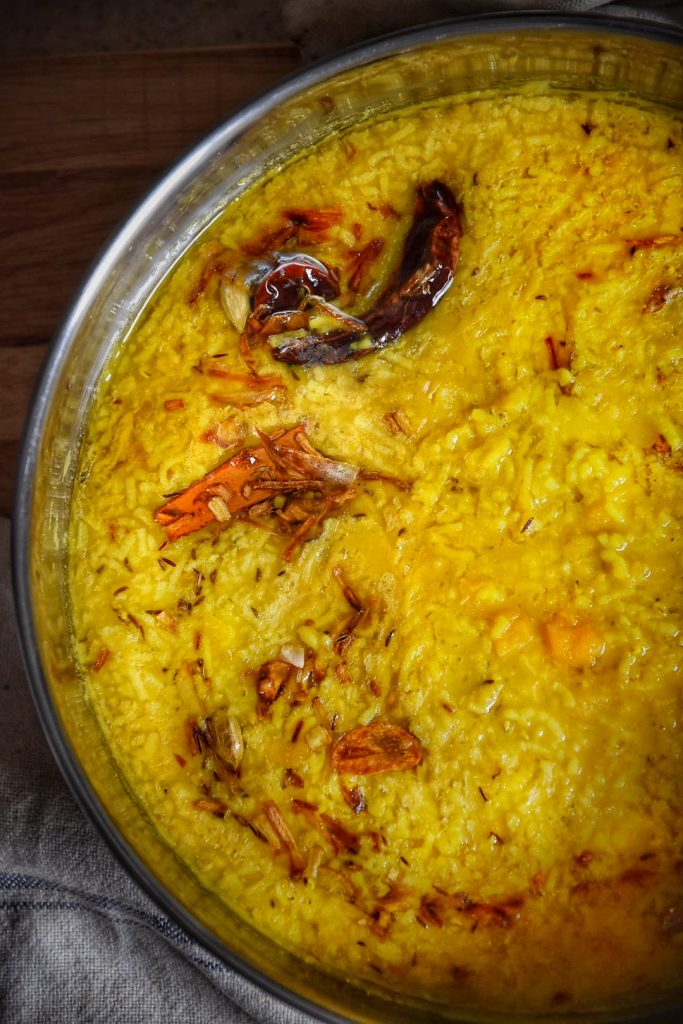Khichuri, also known as Khichdi, can best be described as a rice and lentil porridge or stew.
It is one of the most common dishes across the whole Indian Subcontinent. The very basic definition of Khichuri is a dish made of rice and lentil, but you can make it in several different ways. You can make it with just a few ingredients or you can make it with 20 ingredients, you can make it slurpy and runny (best when you’re a little under the weather), or thick like a risotto, or fluffy like pilaf.
Today I’m going to share my Mom’s go to recipe because…. well cuz mom just knew how to make it the best 🙂
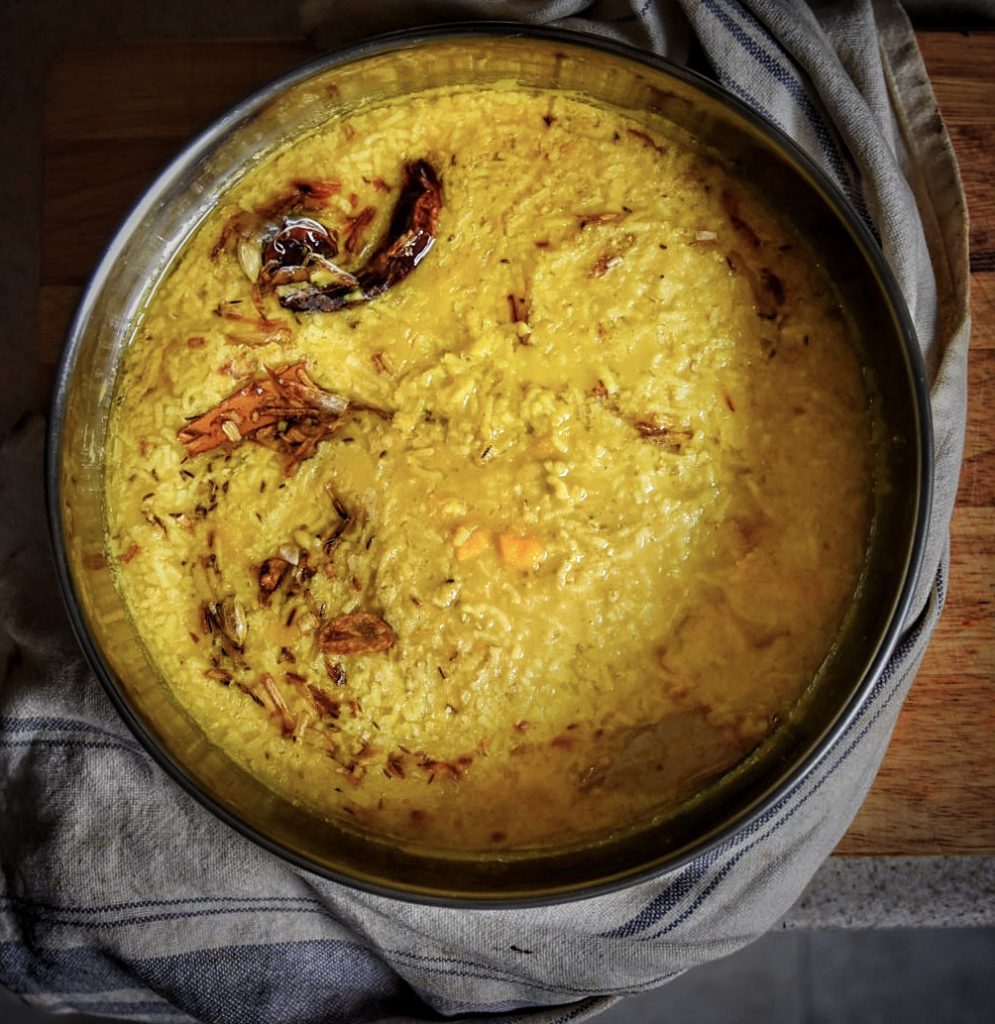
About Khichuri:
I believe I speak for every Bengali when I say, Khichuri has a very special place in our hearts. It’s almost a given that if it’s raining, or snowing or just cold, we’re having Khichuri. It’s also a given that if someone is feeling a little under the weather, you’ll be served some Khichuri.
Khichuri is like the “Chicken Soup for the Soul” for me (or all Bengalis). It has a mysterious effect where it just gives one the assurance that everything will be all right ♥
Fun fact, Khichuri is also known to be the first solid food you feed to a baby in Bangladesh!
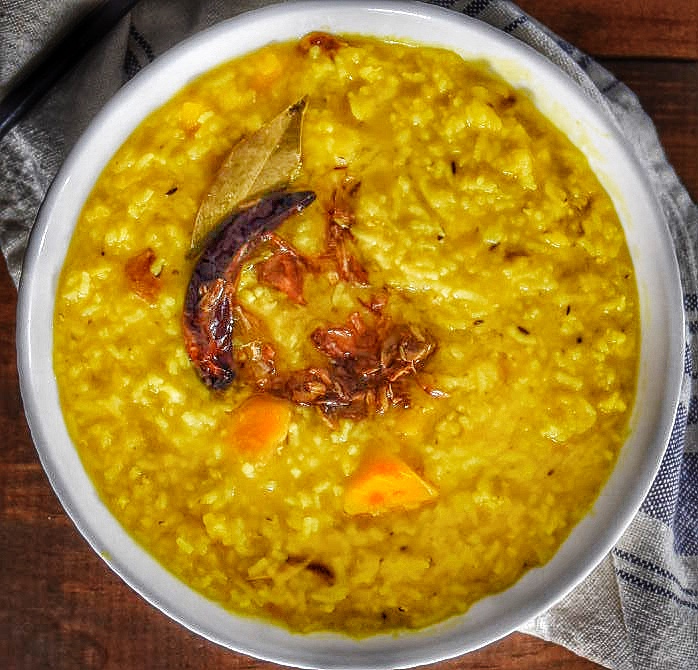
About This Recipe:
Again, there are many.. many… many different variations of this dish. It can be the poor man’s meal with just rice and red lentil, or it can be made to be a rich dish with Moong lentil and Ghee. You can make it very healthy and skip the Ghee and add in some veggies or add chicken for someone who’s a little sick… ORRRR… mix in some lamb or beef to make it rich for a special occasion.
This is one of the most basic Khichuri recipes (the comforting kind ♥), mushy porridge, tempered with spices. The addition of pumpkin is optional for a basic khichuri, but for me it’s what makes Mom’s Khichuri oh so special. It’s the perfect touch of sweet in a spicy dish. If you want to skip the pumpkin, just follow the recipe exactly the same minus the addition of pumpkin.
For tempering, I’ve used 5 whole/dry spices along with onion, ginger and garlic, but you can definitely improvise with whatever you have handy, the only essentials are cardamom, cinnamon, garlic and onion. I’ve also used Ghee here (clarified Indian butter) to give it a rich taste (which I HIGHLY RECOMMEND), but you can use butter or stick with just oil.
You can make this dish in 30 minutes from start to finish, and 3 steps… boil, chop, temper! So what’s the hold up… Give it a go!
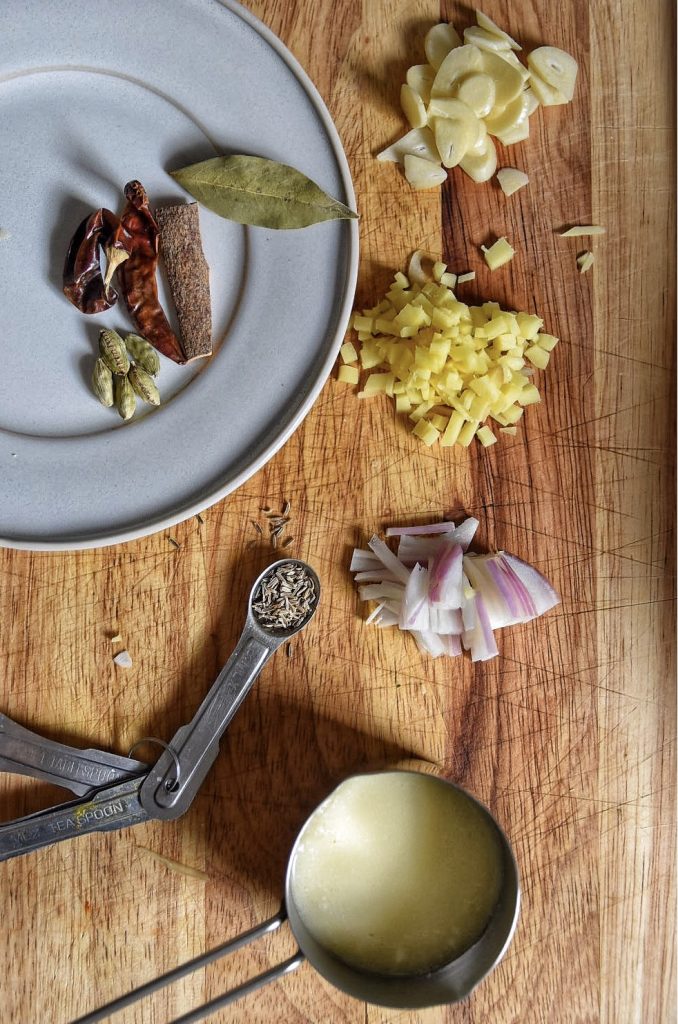
Tempering Spices
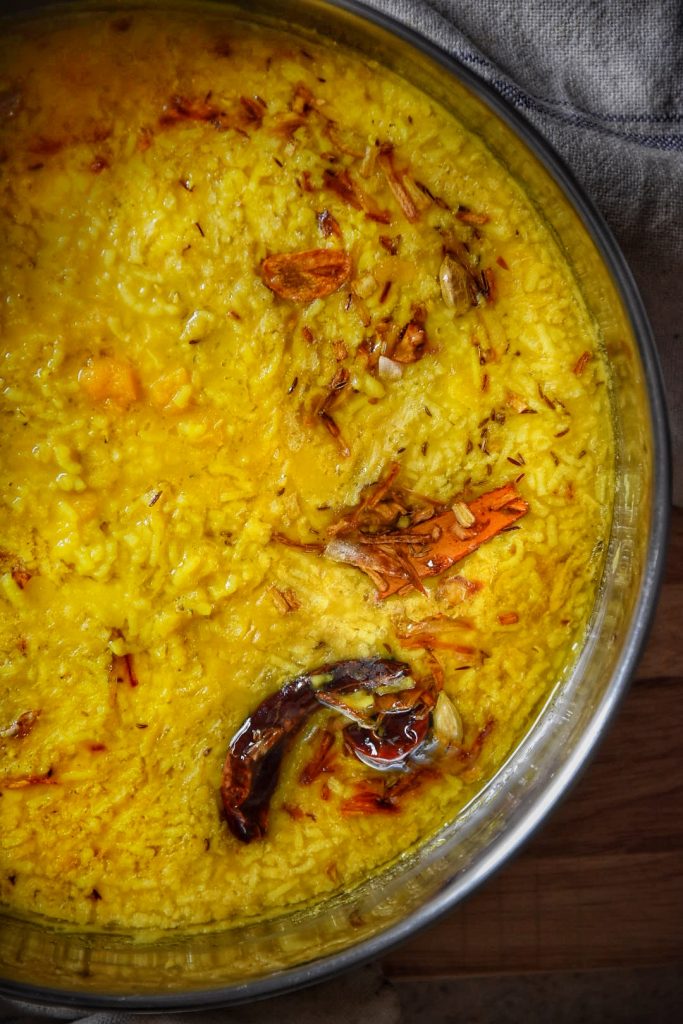
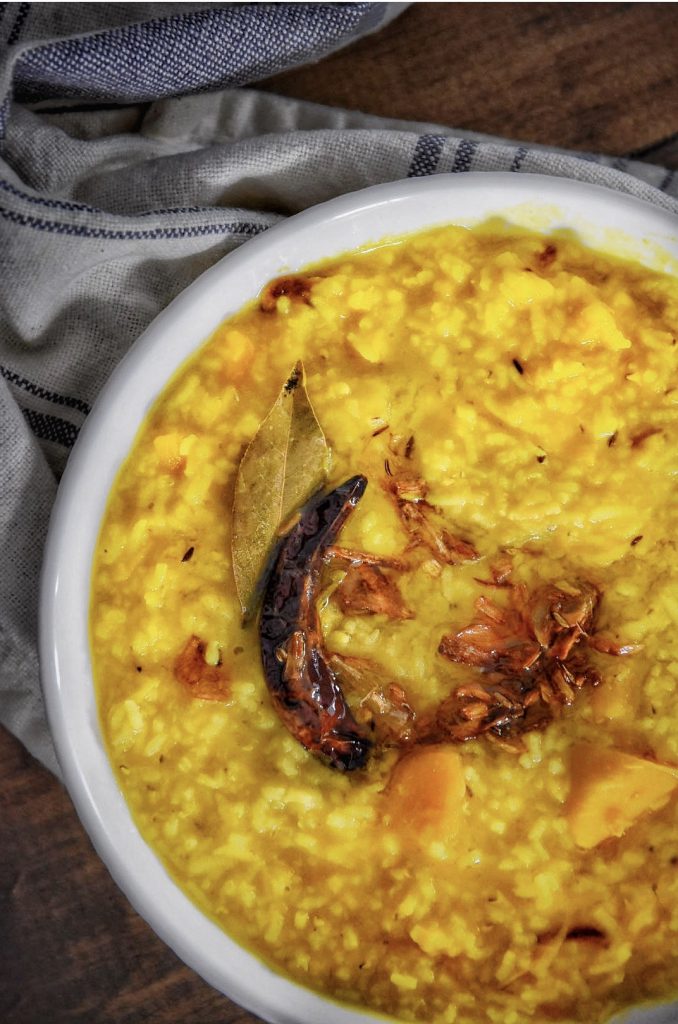
Ingredients:
- 1/2 cup red lentil
- 1/2 cup basmati rice (or any other white rice)
- 2 cups cubed pumpkin, about 1″ cubes
- 1 tsp turmeric
- 1 tsp salt (or to taste)
- 1/2 tsp garlic paste
- 1/2 tsp ginger paste
- 1 tsp oil
- 5 cups of water
Tempering Spices:
- 3 garlic cloves, sliced
- 1/4 inch ginger, minced (one heaping tbsp)
- 1/2 shallot, sliced (about 2 tbsp)
- 3 tbsp Ghee (or butter) **see note 1
- 4-5 cardamom
- 1 small cinnamon stick
- 1 bay leaf
- 2 dried chili (OPTIONAL)
- 1/4 tsp whole cumin (OPTIONAL)
Instructions:
- Rinse and drain the rice and lentil and put them in a pot. Add pumpkin, ginger paste, garlic paste, turmeric, salt and 1 tbsp oil, along with 5 cups of water. Mix well and cook on medium heat for about 20 mins. Until the vegetables are soft and tender.
- After 20 minutes, give it a good stir and mash the veggies with the back of the spoon **note 2. Cover the pot again and simmer on low for 10 minutes.
- Meanwhile, start tempering your spices. Heat the ghee in a pan over medium high heat. Add all the whole spices (cumin, cardamom, cinnamon, bay leaf, dried chili) and fry for about 45 seconds, until fragrant. Then add the sliced, raw spices (garlic, ginger, shallots) and fry until golden brown, about 2 minutes **note 3.
- While the rice is still hot (on low simmer), pour in the fried spices while they’re still sizzling.
- Pour the Khichuri in a bowl. Cozy up on the couch under a fluffy blanket, let the Khichuri do its magic!!
Note:
- Ghee is clarified butter, which is used in many South East Asian dishes to give it a rich taste. It’s the butter of South East Asia, except it’s a litter nuttier and a LOT more fragrant. If you don’t want to use ghee, you can just use butter. If you wanna keep it healthy, you can always use oil.
- The pumpkin in this dish should be mixed in and not left in chunks. The idea of this khichuri is, you should have to use little to no effort to eat it 🙂
- It’s important to not let the spices get dark brown or burnt, it’ll turn the whole thing bitter. So keep a close eye on it.

